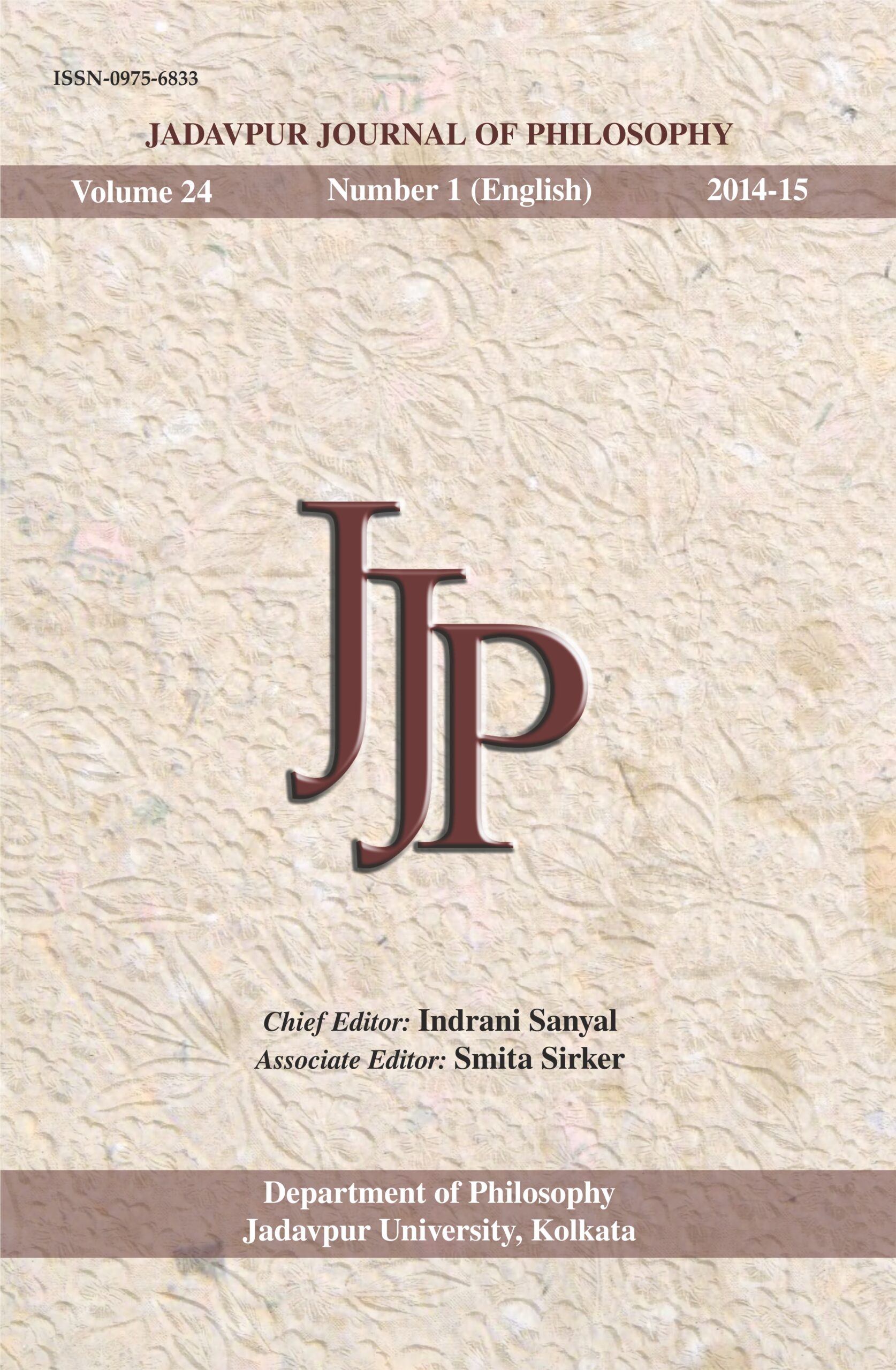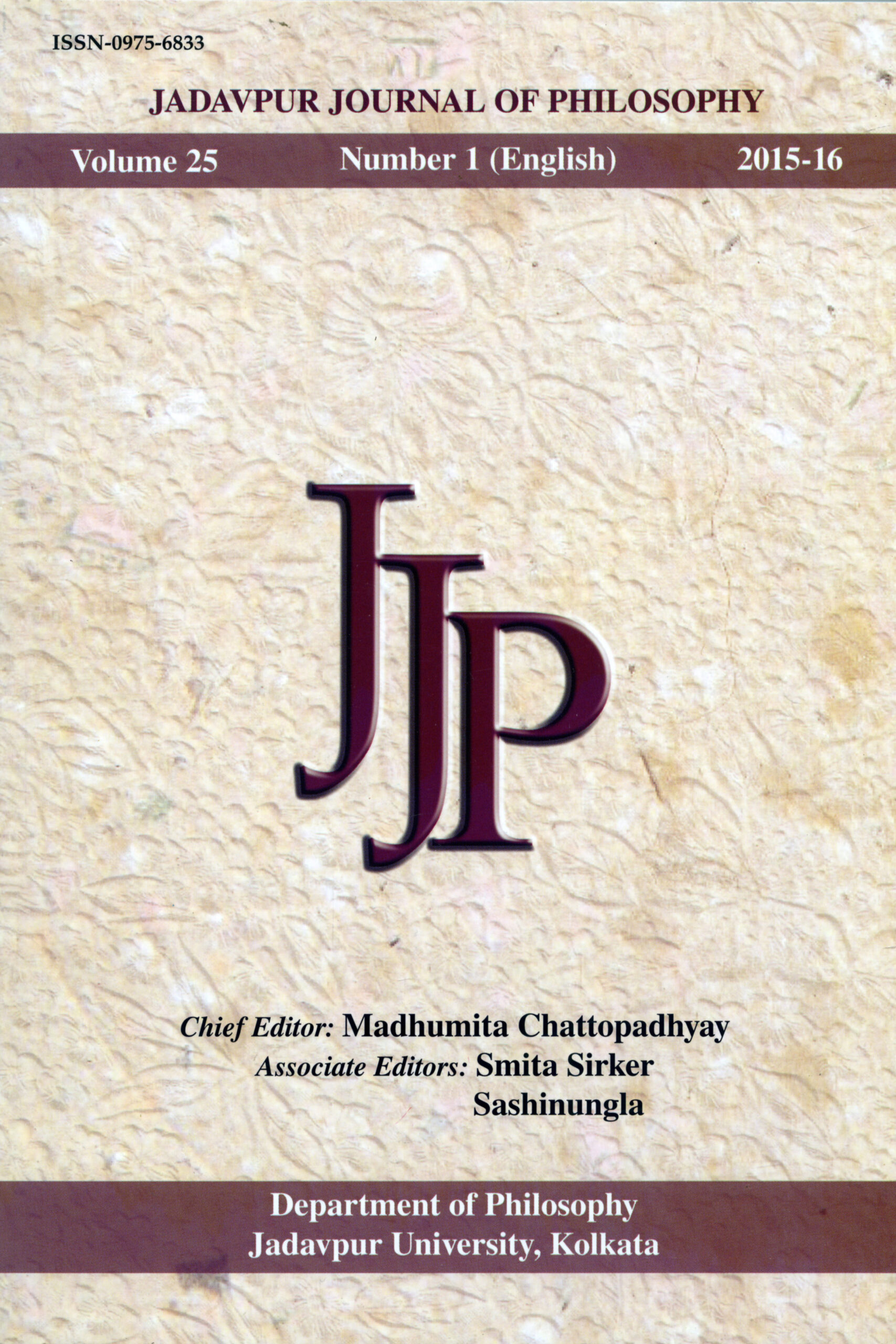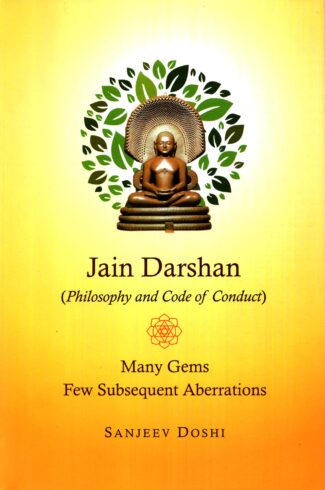Showing 101–110 of 293 results

Jadavpur Journal of Philosophy is a refereed, bi-issue journal, in English (No. 1) and Bengali (No. 2) published annually by the Department of Philosophy, Jadavpur University, Kolkata, India. The journal volume in Bengali is titled Darsan Biksa. The journal is devoted to the publication of original scholarly papers in any branch of philosophy. Its objective is to encourage contributions from scholars, dealing with specific philosophical problems connected with their respective fields of specialization.
Jadavpur Journal of Philosophy is a refereed, bi-issue journal, in English (No. 1) and Bengali (No. 2) published annually by the Department of Philosophy, Jadavpur University, Kolkata, India. The journal volume in Bengali is titled Darsan Biksa. The journal is devoted to the publication of original scholarly papers in any branch of philosophy. Its objective is to encourage contributions from scholars, dealing with specific philosophical problems connected with their respective fields of specialization.

Jadavpur Journal of Philosophy is a refereed, bi-issue journal, in English (No. 1) and Bengali (No. 2) published annually by the Department of Philosophy, Jadavpur University, Kolkata, India. The journal volume in Bengali is titled Darsan Biksa. The journal is devoted to the publication of original scholarly papers in any branch of philosophy. Its objective is to encourage contributions from scholars, dealing with specific philosophical problems connected with their respective fields of specialization.
Jadavpur Journal of Philosophy is a refereed, bi-issue journal, in English (No. 1) and Bengali (No. 2) published annually by the Department of Philosophy, Jadavpur University, Kolkata, India. The journal volume in Bengali is titled Darsan Biksa. The journal is devoted to the publication of original scholarly papers in any branch of philosophy. Its objective is to encourage contributions from scholars, dealing with specific philosophical problems connected with their respective fields of specialization.

Jadavpur Journal of Philosophy is a refereed, bi-issue journal, in English (No. 1) and Bengali (No. 2) published annually by the Department of Philosophy, Jadavpur University, Kolkata, India. The journal volume in Bengali is titled Darsan Biksa. The journal is devoted to the publication of original scholarly papers in any branch of philosophy. Its objective is to encourage contributions from scholars, dealing with specific philosophical problems connected with their respective fields of specialization.
Jadavpur Journal of Philosophy is a refereed, bi-issue journal, in English (No. 1) and Bengali (No. 2) published annually by the Department of Philosophy, Jadavpur University, Kolkata, India. The journal volume in Bengali is titled Darsan Biksa. The journal is devoted to the publication of original scholarly papers in any branch of philosophy. Its objective is to encourage contributions from scholars, dealing with specific philosophical problems connected with their respective fields of specialization.

Jadavpur Journal of Philosophy is a refereed, bi-issue journal, in English (No. 1) and Bengali (No. 2) published annually by the Department of Philosophy, Jadavpur University, Kolkata, India. The journal volume in Bengali is titled Darsan Biksa. The journal is devoted to the publication of original scholarly papers in any branch of philosophy. Its objective is to encourage contributions from scholars, dealing with specific philosophical problems connected with their respective fields of specialization.
Jadavpur Journal of Philosophy is a refereed, bi-issue journal, in English (No. 1) and Bengali (No. 2) published annually by the Department of Philosophy, Jadavpur University, Kolkata, India. The journal volume in Bengali is titled Darsan Biksa. The journal is devoted to the publication of original scholarly papers in any branch of philosophy. Its objective is to encourage contributions from scholars, dealing with specific philosophical problems connected with their respective fields of specialization.
“Jain narrative as well as canonical literature indicates that the first tirthankara of Jains, Lord Adinath, was the founder of work and knowledge-based culture in India. He taught people how to live as communities and adhere to certain prearranged rules of coexistence and cooperation. He prescribed six different skills to be acquired by his subjects for worldly activities like (i) Asi (swordsmanship for protection), (ii) Masi (writing skills), (iii) Krishi (agriculture), (iv) Vidya (knowledge), (v) Vanijya (trade and commerce) and (vi) Shilp (crafts). These skills not only help in creating worldly wealth but also assist individuals and communities to live happily with overall prosperity. Following the path shown by Lord Adinath and subsequent tirthankaras. The Jain society from ancient times has been engaged in business activities with ahimsa (non-violence) as their guiding principle. Owing to this principle of ahimsa, we do find trends of the Jain community being engaged in commerce and trade. The historical trajectory of mercantile characteristics among the Jains continued till date and since India’s Independence, many renowned Jains have contributed to the development of India. This book documents the conceptual foundation of Jain tenets with reference to the Western approach toward business ethics; it also covers biographies of successful Jain entrepreneurs in the past and present. Apart from the details on the conceptual framework of Jain Business Ethics and Jain Business Engagements through the ages, it also contains various essays on Jain Values and Entrepreneurship. This book is an academic attempt to examine the Jain religion as an Eastern case study, which will be of interest to readers, who are looking for an alternative perspective in light of contemporary worries about global business and economic systems.”

The title will seem misleading to many, as it will conjure up in their mind, an idea that the book is about important Jain temples and events and will take you on a pictorial tour of the same. In fact, many well-wishers had advised me to change the title.
Darshan is a name given to all Indian religious philosophies, be it Hindu, Jain or Bauddha.
Western philosophies are not called Darshans. Why is it so, is explained in the Introductory chapter. And when you read it, you will feel proud of our Indian culture and the strides we have taken in the spiritual field.
The title will seem misleading to many, as it will conjure up in their mind, an idea that the book is about important Jain temples and events and will take you on a pictorial tour of the same. In fact, many well-wishers had advised me to change the title.
Darshan is a name given to all Indian religious philosophies, be it Hindu, Jain or Bauddha.
Western philosophies are not called Darshans. Why is it so, is explained in the Introductory chapter. And when you read it, you will feel proud of our Indian culture and the strides we have taken in the spiritual field.

The title will seem misleading to many, as it will conjure up in their mind, an idea that the book is about important Jain temples and events and will take you on a pictorial tour of the same. In fact, many well-wishers had advised me to change the title.
Darshan is a name given to all Indian religious philosophies, be it Hindu, Jain or Bauddha.
Western philosophies are not called Darshans. Why is it so, is explained in the Introductory chapter. And when you read it, you will feel proud of our Indian culture and the strides we have taken in the spiritual field.
The title will seem misleading to many, as it will conjure up in their mind, an idea that the book is about important Jain temples and events and will take you on a pictorial tour of the same. In fact, many well-wishers had advised me to change the title.
Darshan is a name given to all Indian religious philosophies, be it Hindu, Jain or Bauddha.
Western philosophies are not called Darshans. Why is it so, is explained in the Introductory chapter. And when you read it, you will feel proud of our Indian culture and the strides we have taken in the spiritual field.

The book presents the essentials of jnana-yoga (the central Principles of Super-imposition, Dependent Origination and Two Truths) based upon the teachings of Sankara, the Hindu philosopher-mystic and Nagarjuna, the Buddhist philosopher-patriarch.
Jnana-yoga or The Path of Knowledge is one of the four central paths to knowledge of man and the world and realisation of the ultimate reality as obtained in the ancient religious and philosophical traditions of India. It is the way of overcoming doubt through the exercise and development of the buddhi (the discriminative intellect). The roots of this tradition are traced to the glorious Upanishads; and the earliest jnana-yogis are none other than the Upanishadic rishis themselves. In this book, the author presents the fundamental insights of jnana-yoga based upon the teachings of two of the most prominent jnana-yogis Shankara, the Hindu philosopher, poet and mystic and Nagarjuna, the Buddhist philosopher and patriarch. A result of Prof. Puligandlas theoretical and experimental study of their teachings for over three decades, the book systematically discusses in clear and unambiguous terms three central principles of jnana-yoga, namely, the Principle of Superimposition; the Principle of Dependent Origination; and the Principle of Two Truths. The broad-based approach of this work is evident in many ways as, for instance, in its use of the principles of modern science to illustrate the ideas of jnana-yoga and discussion of concepts of the western philosophical tradition as well. The book would immensely aid scholars of religious-philosophical traditions as well as students studying Indian traditional systems of thought.

This book traces the development of F. Scott Fitzgerald and his characters from dreams to maturity. It shows how he utilised his own experience to represent the national and the human experience in his novels.
The novels of F. Scot Fitzgerald reflect the life he lived. They can, in fact, be seen as the records of a pilgrim in his progress from innocence to experience. Almost as a rule all the heroes in Fitzgeralds novels mature as they encounter the real world. All his major works illustrate an agonized search for the true inner self, a quest for individuality. This book traces the development of Fitzgerald and his characters from dreams to maturity. It shows how all the heroes in Fitzgeralds novels from Amory Blaine in This Side of Paradise to Monroe Stahr in The Last Tycoon, in their search for different ideals, represent mans quenchless desire to affirm the perennial moral values of life. In recording the journey of all his dreamers from Amory Blaine to Monroe Stahr, he depicted a longing for a unified selfhood that enjoys a universal appeal in the context of the contemporary realities of life. The book shows how Fitzgerald utilized his own experience a tragic experience on the whole to represent the national experience and ultimately the human experience. Almost as a rule, all of them start their journey as innocents with an explicit faith in life and the pre-conceived notions about the goodness of man. Experience comes to them through their confrontation with reality both social and moral which do not conform to their idealistic faith. Since they are powerless to change the reality they live in, they brood, they suffer. The overwhelming impression is of disillusionment and suffering. But Fitzgerald bestows a positive value on suffering. His wise and tragic sense of life imparts an enduring quality to his works. The book justifies how Fitzgeralds works finally transcend the time he lived in and establish him as a major American writer.
| There are no products |